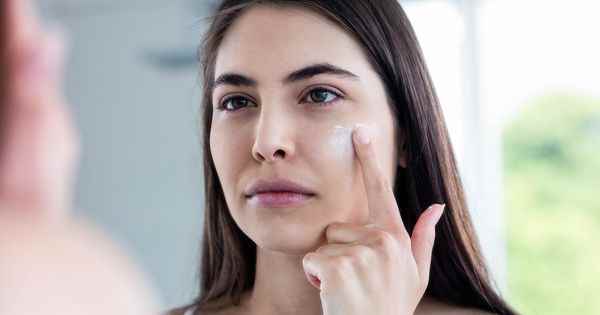Posted on 04/08/2021
2 min read
Certain substances found in cosmetics and beauty products could be responsible for an increased risk of endometriosis. Spanish researchers are sounding the alarm and calling for preventive measures to be put in place to reduce public exposure to these compounds.
A chronic disease that can be disabling, endometriosis is characterized by “the presence outside the uterine cavity of tissue similar to the uterine lining which will undergo, during each of the subsequent menstrual cycles, the influence of hormonal changes”, indicates the EndoFrance association. Affecting one in ten women of childbearing age, the disease is most often responsible for chronic pain, but also in some cases of infertility.
A team of researchers fromUniversity of Granada and San Cecilio Hospital in Granada looked at the role of hormones in the development of endometriosis, and more specifically on the issue of endocrine disruptors, substances capable of mimicking or blocking the natural action of hormones.
“If the exact causes of [l’]appearance [de l’endométriose] are not known with exactitude, a wide range of factors are suspected to be involved, including genetic, epigenetic and environmental causes, where hormones appear to play a key role “, explains gynecologist Olga Ocón, one of the main authors of the study.
Endocrine disruptors in certain cosmetics
The scientists sought to measure the internal levels of parabens and benzophenones, two substances suspected of being endocrine disruptors, in 124 women with and without endometriosis, recruited through public hospitals in the city of Granada, and collected data. information on the use of cosmetics and beauty products for each of these women.
Verdict, the study reveals a link between the use of certain cosmetics such as lipsticks, face creams, hairsprays, or even hair dyes, and high internal levels of parabens and benzophenones. The researchers add that they have also observed an association between high levels of some of these endocrine disruptors and a risk of endometriosis. The use of certain cosmetics – not all, let’s be precise – could have contributed to the increase in cases of endometriosis detected in recent years.
Based on the principle that it remains difficult today to establish a diagnosis of endometriosis, the researchers warn of the need to implement preventive measures intended to reduce exposure to these various substances. In particular, it would be a question of turning to beauty products without any endocrine disruptor.
.
dts5
